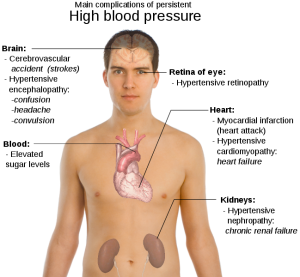Hypercholesterolemia is basically a medical condition that is characterized by high levels of cholesterol in the blood. High cholesterol is not considered to be a disease. It is referred to as a metabolic derangement. Elevated levels of cholesterol are caused due to lipoprotein levels going awry in the blood. This is caused by genetic factors, diet and other medical conditions such as diabetes or hypothyroidism.
Treatment for high cholesterol involves eating a diet that is low in cholesterol and possibly taking medications. It may however cause other disorders, like coronary heart disease, which can result in surgery.
While there are no specific symptoms that you can see when someone has elevated levels of cholesterol, the condition can cause other diseases to occur. This is why it’s recommended that adults get a
cholesterol test (full lipid panel) at least once every 5 years. Some of the conditions that can be fostered by high cholesterol are as follows:
Coronary heart disease – Cholesterol is significantly related to CHD or coronary heart disease. As the cholesterol levels increase, they block arteries and do not allow oxygen and nutrition to reach heart muscles that pump blood. As a result these muscles are unable to perform their function properly, resulting in chest pain, something that can ultimately lead to a myocardial infarction – aka, a heart attack – if the problem is not brought under control.
[caption id="attachment_518" align="alignleft" width="300" caption="Some complications of high blood pressure."]

[/caption]
Stroke – As the blood supply to the brain reduces due to narrow arteries a stroke becomes more imminent. Sometimes a vessel may burst if the narrow passage cannot sustain the pressure with which the blood is pumped.
Hypertension – High blood pressure and high levels of cholesterol are linked. As the cholesterol plaque and calcium narrows the passage way, the heart works harder to pump blood to ensure that it reaches all parts of the body. This results in abnormally high blood pressure.
Peripheral vascular disease – This is a condition that refers to the blood vessels other than those related to the heart and the brain. As fatty deposits start to occur in the peripheral vessels, issues related to the limbs may start to occur as well.
Prevention of High Cholesterol
Prevention of high levels of cholesterol can significantly reduce the chances of getting the aforementioned diseases. And prevention of high cholesterol is best done by
controlling the diet in healthy ways. A high fiber diet along with fresh vegetables and fruits is recommended by the American Heart Association.
In addition to diet control, giving up a sedentary lifestyle and adopting a more active one can help in cholesterol management to a large extent. Take up a sport or make sure that you walk for at least an hour every day. Decide on the specific activity levels that you need to maintain depending on your age after consultation with a physician.
If you have already been diagnosed with high cholesterol, you may want to check your levels regularly with a home cholesterol test. This easy to use test can be conducted from home so that you do not have to go all the way to the laboratory every time to get your cholesterol levels checked.
-
Article by Anne Hamilton